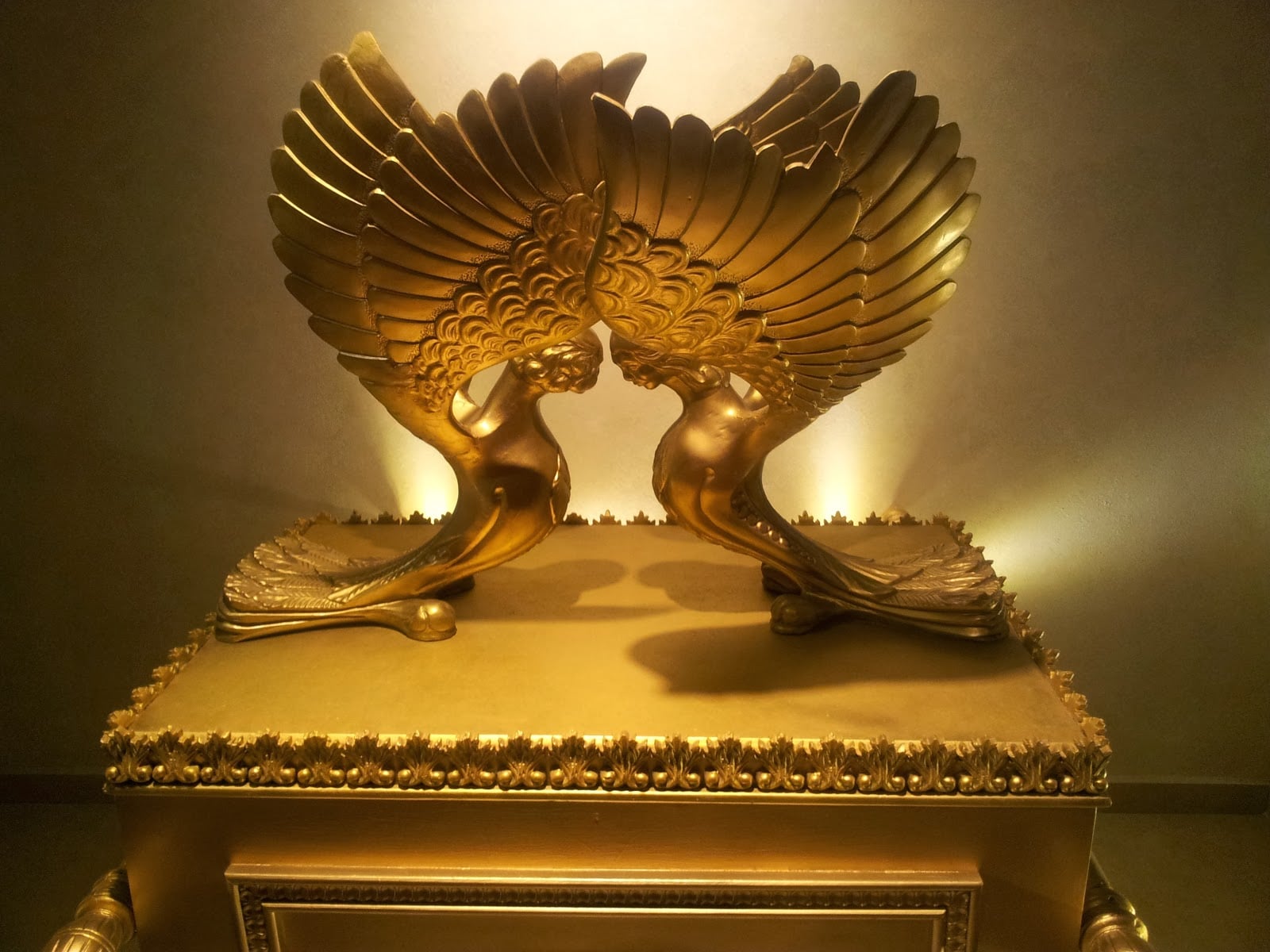And thou shalt make two cherubim of gold; of beaten work shalt thou make them, at the two ends of the ark-cover. And make one cherub at the one end, and one cherub at the other end; of one piece with the ark-cover shall ye make the cherubim of the two ends thereof. And the cherubim shall spread out their wings on high, screening the ark-cover with their wings, with their faces one to another; toward the ark-cover shall the faces of the cherubim be. And thou shalt put the ark-cover above upon the ark; and in the ark thou shalt put the testimony that I shall give thee. And there I will meet with thee, and I will speak with thee from above the ark-cover, from between the two cherubim which are upon the ark of the testimony, of all things which I will give thee in commandment unto the children of Israel.
Ex. 25:18-22
Today we read the Torah portion, Terumah (Ex. 25:1–27:19), in which Moses is instructed how to construct the Ark of the Covenant with two Cherubim (Keruvim) on the lid of the Ark. A peculiar detail of this commandment requires hammer out two Cherubim from the same slab of gold from which the lid of the Ark is made. This seems like a daunting task – wouldn’t it be much easier to make each cherub separately and, once finished, weld them on the cover? Yet G‑d demands that they must be hammered out from the same slab of gold as the cover is made of. Why?
The Talmud teaches that two Cherubim which stood in an embrace in Holy of Holies represented the relationship between G‑d and His nation – people of Israel. Rabbi Yohanan and Rabbi Eliezer disagreed as to the details. The former held that Cherubim stood facing each other, as it says, “with their faces one to another” (Ex. 25:20); whereas the latter held that they faced inward – toward the door of the Holy of Holies (Kadosh HaKadoshim), as it says in the Scriptures, “And their faces were inward” (2 Chronicles 3:13). The sages of the Talmud reconcile two divergent views by explaining that when the relationship was good, i.e., when children of Israel obeyed G‑d’s will, the Cherubs’ faces were facing towards each other, as a sign of affection. When the relationship was not so good, marred by idol-worship, the Cherubs would miraculously turn their faces away from each other towards the door.
In quantum physics, two particles born from a single particle (say, when a particle decays) always remain entangled. Two entangled particles are described by the same wavefunction as they share the same state vector. They are, in reality, but one object, albeit seemingly separated by space.
Just as two particles originating from the same source remain entangled, two Cherubim hammered out from the same slab of gold remain entangled, as it were. Indeed, Talmudic Sage, Rav Kattina, said that whenever Jewish people came to the Jerusalem Temple (Bet HaMikdash) during a pilgrimage Festival, the priests would pull back the curtain and show them the Cherubim, whose bodies were intertwined with one another in an embrace, i.e., they were physically entangled. This has a powerful message for us: whether G‑d is happy with us (when we behave according to His will), or He is not happy with us (when we disobey His will), G‑d and Israel remain entangled—one thing—no matter what. Thus the Zohar—the primary text of Jewish mysticism, Kabbalah—states that G‑d and the nation of Israel are one!
This is why every prophet (navi), before receiving a prophecy, had to meditate upon the place between the Cherubim. Only by connecting oneself to this eternal entanglement (oneness) between G‑d and His people a prophet was able to achieve a prophetic state and receive a revelation from G‑d.
Today, we have no Temple and no Cherubim in the Holy of Holies. But the entanglement remains—we are forever entangled with our Creator.



Leave A Comment